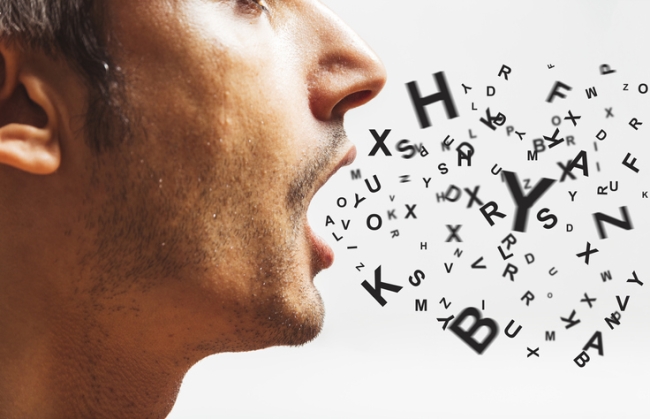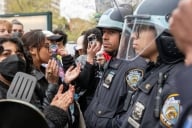You have /5 articles left.
Sign up for a free account or log in.

iStock.com/jaouad.K
As a staff attorney for the American Civil Liberties Union, Emerson Sykes has focused on the intersection of racial justice and free speech and how it plays out on college campuses.
Sykes is a strong proponent of the First Amendment and said he's aware of and “frustrated” by the many examples of public and private universities invoking free speech rights in response to incidents of racism or hateful speech from students. He believes it’s a way for administrators to say “our hands are tied” and sometimes shirk their responsibility to meaningfully respond to such incidents, which can leave students of color, in particular, feeling hurt and unsafe, Sykes said.
“When I talk to administrators, I tell them, ‘For a moment, forget about the First Amendment,’” he said. “This is a community issue. If someone is hurt in your community, then think about the ways that your community can heal. When you’re interpreting the First Amendment in your head when someone is across the table from you and crying, it’s not a good place to start.”
As national conversations about racial injustice and police brutality have prompted students to call out their peers for racism and call on their colleges to do more to address it, student activists and leaders have lately demanded more punitive responses from college administrators. The activists have made clear that they find the “First Amendment response” to be increasingly irritating. Whether hateful speech occurs on campus or on social media, which is now the primary forum for campus speech since campuses closed in response to the coronavirus pandemic, students want to see peers that engage in it disciplined, including with suspension or expulsion.
Sykes, who is Black, was a fellow at the University of California National Center for Free Speech and Civic Engagement during the 2019-20 academic year. He led a First Amendment workshop with student activists at UC San Diego, where they did a “deep dive” into free speech rights. The workshop involved students responding to a hypothetical offensive speech incident on campus.
Sykes noticed that students had a “widely held misconception” that the U.S. Constitution does not protect “hate speech.” This belief is not limited to college students, but undergraduates in particular question why there aren’t legal limits on bigoted, hateful and racist language, Sykes said. His priority in the workshop was not to immediately shut down students' concerns with complicated explanations about the First Amendment, but to show them how they can work within its boundaries, he said.
“Undergrads have very deep empathy and keen initiative to make things better,” he said. “The whole point was to empower them with more knowledge. Not shame them for a lack of knowledge, but help them understand what the rules are, what the lines are and how they can navigate them.”
Black student leaders at Salisbury University in Maryland recently called on administrators to take action against two students for hateful speech used in private group messages. University president Charles Wight responded in a video message to the student body that his power to punish the offending students was limited.
"I want to be honest with you about the legal limitations of what the university can and cannot do to punish the individuals responsible for these acts,” he said. “As a public university, the law requires that we must respect free speech, no matter how much we abhor what is said or what is written. It would be illegal for us to take punitive action against anyone simply for their words, no matter how vile or hateful they might be.”
Wight suggested students counter hateful speech and actions by speaking out against it.
“The same laws that protect hateful expression also protect us,” he said.
The Salisbury Student Government Association did not find that suggestion acceptable.
“If President Wight believes that ‘hate has no home’ at SU, but takes the possibility of punitive action off the table by citing free speech, then hate will continue to find a safe harbor within our university,” a June 15 statement from the association said.
Sykes cited a precedent-setting case in which the ACLU defended the free speech rights of a Ku Klux Klan member as an example of how the First Amendment can be used to protect those protesting against racial injustice.
“It’s not just in theory that we think it’s worthwhile,” Sykes said. “It’s in practice every day that we use these precedents to defend what we believe in.”
Patience Bryant, director of the Office of Student Conduct and Ethical Development at California State University, Long Beach, said the public institution considers the First Amendment “at all times.” The university's Division of Student Affairs attempts to educate students about free speech protections with a dedicated resource page on its website.
Nearly all of the possible bias incidents Bryant’s office investigates are not considered university policy violations and are protected by the First Amendment, she said. Rather than taking punitive action, officials in the Office of Equity and Diversity will address the impact hateful speech has on students and staff members and provide support, whether that means organizing a discussion forum about the incident, providing counseling services or setting up a direct conversation between the parties involved, Bryant said. This is known as restorative justice and seeks to help the offending student understand that they hurt members of campus with their words and provide reconciliation to the offended party.
“At the end of the day, there’s an appreciation from the community about acknowledging what’s happened and creating that space,” Bryant said.
As conversations about race continue on social media, Bryant expects that more college administrators may be confronting how free expression and inclusion conflict. Bryant, who is Black, said the job is even more difficult when officials are people of color and become the target of such speech.
“Sometimes people forget that decision makers are often impacted parties as well,” Bryant said. “We also have to navigate that space … Sometimes creating that healing space is not even just for students.”
Gourjoine Wade, associate vice president for student affairs and dean of students at Grambling State University, a historically Black public university, said institutions have to crack down on speech that endangers their communities. The words can “incite harm” against others, and institutions should not shy from expulsion or suspension when such harm is done, he said.
"I don’t think restorative justice should be taken off the table, and I don’t think suspension or expulsion should be taken off the table either," he said. "You don’t get a pass for potentially subjecting your fellow students to hurt, harm or danger."
There is a very high threshold for suspending or expelling a student for hateful speech not directed at a specific individual, said Martha Compton, president of the Association for Student Conduct Administrators.
The latest Model Code of Student Conduct created by the Foundation for Individual Rights in Education, or FIRE, to guide institutions on how to address student behavior without violating their rights, includes the standard legal definition for student-on-student “discriminatory harassment” in educational programming. In order for students’ speech to qualify as harassment, it cannot solely be “subjectively offensive” and has to target a specific individual, according to the code. FIRE, a civil liberties watchdog organization, states that “straying from these definitions may result in successful litigation against the college.”
“By faithfully following the code’s definition and declining to punish students for ‘free-floating’ offensive speech, the college will create an environment where students may have robust discussions without fear of being charged with harassment for giving subjective offense,” the code says.
But when hate from multiple students over a period of time compiles, or a single hateful statement is shared thousands of times on social media, it can have a similar impact on campus as racial harassment, Compton said. Such speech could cause students of color to perceive campus as a racially hostile environment and make it more difficult for them to fully participate in campus life, she said.
“We have to recognize that collectively, those individual actions create an environment that’s problematic and difficult for students and faculty to navigate, especially those of color,” Compton said. “Our institutional responses have to be significant and recognize when there’s been real harm done.”
Sykes said in some ways, the calling out and shaming of students by students is a way that free speech is working to correct racist behavior, without requiring the university disciplinary system. The Salisbury students, for example, were swiftly removed from the student organizations to which they belonged. Compton said college athletes can expect to be similarly removed from their teams for such behavior.
A women's volleyball player at Southeastern Louisiana University was recently dismissed from the team for a racist social media post brought to university administrators' attention by other students, said Gabe Willis, the dean of students. Students responding on social media called for her to be expelled, he said. But Willis believes that students increasingly calling out racism among their peers will ultimately lead "those with ill intentions" to either change their behavior or go elsewhere.
"We have to govern ourselves accordingly, and we have to call out those around us," Willis said. "If a person comes up against a culture that they don’t agree with, they remove themselves. It makes it hard for those that don’t believe those things to coexist."
But Sykes said the total “cancellation” of people and the destruction of their future as a result of saying something racist is not going to fix the issue of racism in the end.
“To the extent that we are trying to identify a problem and find a solution, I’m all for it,” Sykes said. “What gives me pause is when we forget that people have the capacity to change … It might be cathartic to drag people, but it’s not a long-term solution.”








